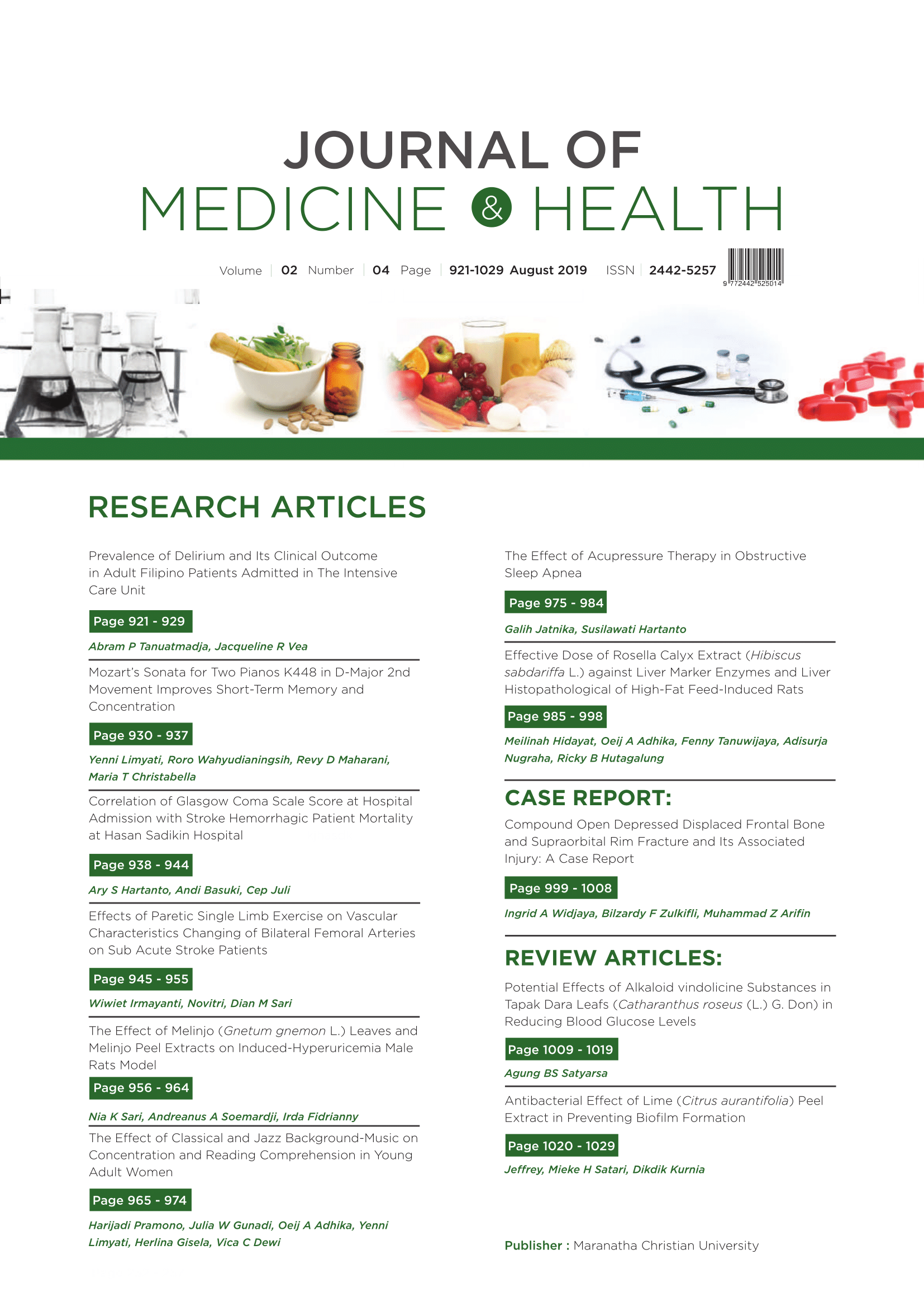Antibacterial Effect of Lime (Citrus aurantifolia) Peel Extract in Preventing Biofilm Formation
DOI:
https://doi.org/10.28932/jmh.v2i4.1841Abstract
The routine and long term use of chemicals to maintain oral and dental health have the potency to result in the emergence of side effects; therefore another strategy is needed as an alternative such as using antimicrobial agents extracted from plants. The purpose of this study is to review the effectiveness of lime (Citrus aurantifolia) peel extract as an antibacterial in preventing biofilm formation. Biofilm is a component consisting of bacteria in a self-produced polymeric matrix, attached to an inert surface, alive, and can survive because of its ability to capture nutrients and withstand adverse environmental conditions. Lime peel contains flavonoids which are the largest group of polyphenol compounds that can work as antioxidants and antibacterial by denaturing bacterial cell proteins and damaging bacterial cells. Flavonoids can also inhibit glucosyltransferase (GTF) activity of Streptococcus mutans to prevent biofilm formation. Lime peel extract inhibits the formation of the activity of the enzyme Streptococcus mutans. As a conclusion lime peel extract contains compounds with therapeutic potential and has the effect of inhibiting the formation of the activity of the enzyme Streptococcus mutans so that it can be used to inhibit the formation of biofilms. Keywords: antibacterial, biofilm, Citrus aurantifoliaDownloads
Download data is not yet available.
Downloads
Published
2019-08-27
How to Cite
1.
Jeffrey J, Satari MH, Kurnia D. Antibacterial Effect of Lime (Citrus aurantifolia) Peel Extract in Preventing Biofilm Formation. J. Med. Health [Internet]. 2019Aug.27 [cited 2026Jan.2];2(4). Available from: http://114.7.153.31/index.php/jmh/article/view/1841
Issue
Section
Articles
License
Authors who publish with this journal agree to the following terms:
- Authors retain the copyright and grant the journal right of first publication with the work
simultaneously licensed under a Creative Commons Attribution-NonCommercial 4.0 International License that allows others to share the work with an acknowledgement of the work's authorship and initial publication in this journal. - Authors are able to enter into separate, additional contractual arrangements for the nonexclusive distribution of the journal's published version of the work (e.g., post it to an institutional repository or publish it in a book), with an acknowledgement of its initial publication in this journal.
 This work is licensed under a Creative Commons Attribution-NonCommercial 4.0 International License.
This work is licensed under a Creative Commons Attribution-NonCommercial 4.0 International License.

















